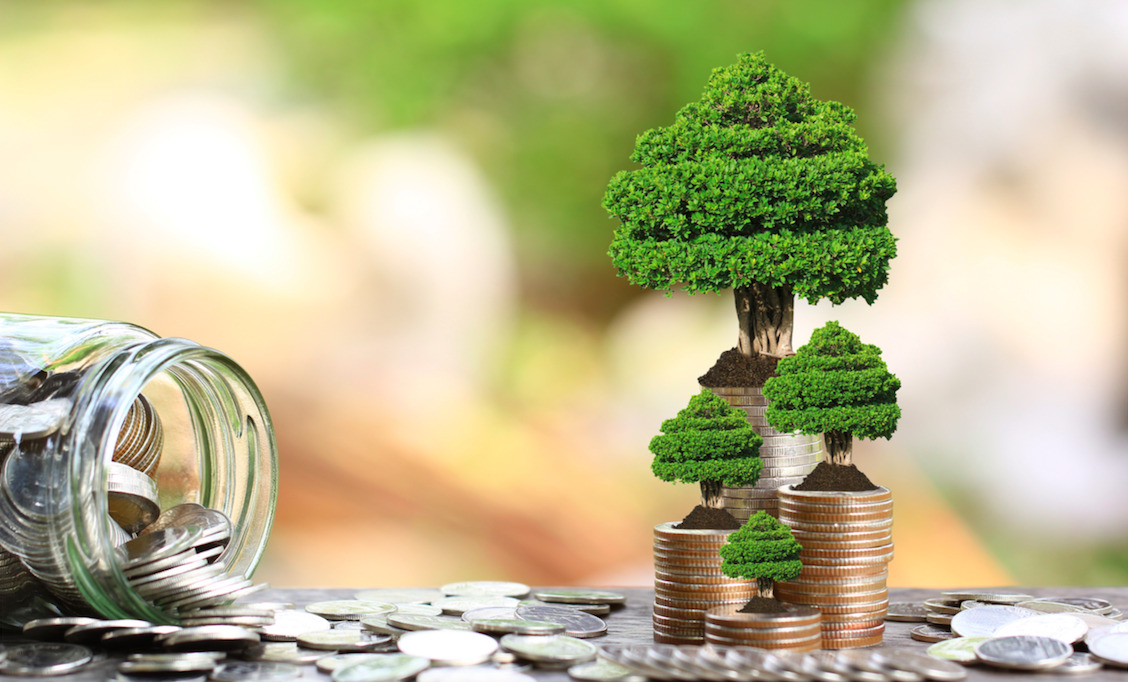By Hamlin Lovell, NordicInvestor
September 2020 saw record issuance of green bonds, and a strong pipeline of supranational, sovereign and corporate issuance lies ahead, partly accelerated by Covid-19 recovery and carbon transition spending. There are high hopes that the new EU rules will not only harmonise standards for green bonds but could also define a global standard. Yet challenges remain including data and technical issues, and expanding the concept to credit asset classes such as asset backed and mortgage securities.
Panelists from left to right; Søren Larsen, Rune Riisbjerg Thomsen and Douglas Farquhar
NN is a global asset manager with a philosophy that responsibility extends beyond short term financial gains.
There is a strong link between the positive impact of ESG integration and better risk adjusted returns. All products across all asset classes apply ESG in one of three ways: ESG integration, sustainability, and impact….”
– Douglas Farquhar, Client Portfolio Manager, Green Bonds, NN Investment Partners.
PKA is a Danish pension fund that has also embedded ESG across all asset classes.
We view green bonds as posing less non-financial and reputational risk. We see green bonds as a way to contribute to the green transition within the credit space. What’s not to like if you can get roughly the same yield and have a positive impact….”
– Rune Riisbjerg Thomsen, ESG Analyst, PKA Pension
Nykredit is both an issuer of green bonds and an investor in them. The mutually-owned firm builds on two centuries of experience in mortgage finance and is also an asset manager.
Doing things together is part of the DNA of the Danish system of mortgage finance. In 2020, our pension fund playing its part in societal recovery by expanding lending to homeowners, companies, and citizens, and supporting sustainable housing. Sustainability and returns go hand in hand….”
– Søren Larsen, Head of ESG and Sustainability, Nykredit.
Defining a green bond and avoiding “greenwashing”
The current system of self-assessment combined with a disparate range of standards and labels gives rise to differences of opinion over how to define green bonds. NN subscribes to multiple external data sources as well as carrying out internal screening, and has built its own green bonds database to form its own opinions on whether bonds with a green label should be defined as green.
Some index providers have also developed their own methodologies for selecting green bonds, but there are concerns about whether their research will prove to be thorough enough.
Passive index investors who do not make an effort to ensure that bonds are genuinely green are not only taking reputational risks, they could also be forced into a secondary market sale of any bonds that lose the green label….”
– Douglas Farquhar
This could happen in 2021, when the upcoming EU taxonomy of green activities and definition of green bonds, including frameworks for use of proceeds, and benchmarking, comes into force. The EU rules are welcomed by all three participants. A regulatory watermark should be a bulwark against “greenwashing” and create a best in class standard, supported by independent, external third party reviews.
Europe leads the world in ESG and may also do so in the green bonds space;
If non-EU countries follow the rules, as Japan has committed to, they could also become the de facto global standard….”
– Douglas Farquhar
Of course, asset managers could still have different perspectives on certain issues. One contentious question is whether carbon intensive companies should be able to issue green bonds. The reality is that many of them will have to do so in order to finance their transition to lower carbon business models. Therefore, NN will contemplate investing in a bond linked to a renewable energy project even though the issuer is an oil company. In contrast, NN does not approve of the Danish Government proposal to add green labels to conventional bonds.
Issuance pipeline
Denmark’s impressive ambition to cut its carbon emissions by 70% by 2030 is one factor that has helped the green bond market grow to around EUR 650 billion as of September 2020. Covid-19 has accelerated issuance of green bonds, and also of social and sustainability bonds, which share some of the same terminology (some sustainability bonds can also be classified as green bonds).
The pandemic has increased interest in ESG investing more broadly, by raising awareness of climate change, and by fostering a greater sense of social solidarity within and between countries – we live in a global village and we are all interconnected….”
– Søren Larsen
One third of the EU Covid rescue plan – or around EUR 225 billion of bonds – will be green bonds. Meanwhile, Germany, Luxembourg and Sweden are issuing their own green bonds. Germany in particular is building a green bond yield curve by issuing at multiple maturities.
A greater supply of green bonds is welcome since it would create more liquidity, and might also improve yields, which are being driven down by strong demand for new issues.
Corporate issuance is growing, and collaborative conversations amongst investors and companies are helpful to encourage more corporate issuance. Investors need to engage with companies to feed back their criteria.
“We manage strategies containing both sovereign and corporate bonds, but our pure corporate bond strategy launched this year is growing fastest and we expect it to become our largest fund”
– Douglas Farquhar
We have not historically been very active in corporate bonds, but the EU taxonomy could help us to grow in this area….”
– Rune Riisbjerg Thomsen
Moving into the mainstream
Should green bonds be seen as a separate asset class or as part of overall fixed income portfolios? The consensus is that they are moving into the mainstream.
We treat green bonds like any other asset. They are part of our repo and collateral. It would be dishonest to treat them differently”
– Rune Riisbjerg Thomsen
Green bonds have the same credit quality, duration and yield, and are moving from dedicated mandates to normal fixed income allocations…”
– Douglas Farquhar
Broadening out the asset class
Notwithstanding the impressive and accelerating issuance trend, the market is not yet broad enough to satisfy every type of fixed income mandate. The sector is mainly investment grade so it would be difficult to build a diversified high yield portfolio of green bonds. And green bonds currently are mainly sovereign or corporate and it is not clear how some sorts of asset-backed securities, such as mortgage-backed securities, can be accomodated.
Danish mortgage bonds have a huge potential for financing the taxonomy activities, but we need to solve the question of grandfathering urgently as most mortgage bonds have a duration of 20 or 30 years….”
– Søren Larsen
Even within the corporate universe, some sectors such as autos are under-represented though issuance from Daimler and VW in 2020 is starting to redress this balance…”
– Douglas Farquhar
Technical details to finalise
Indeed, a number of technical details need to be firmed up at the European level and all stakeholders need to work together to craft solutions. “The devil is in the details” says Søren Larsen.
Investors and companies should provide guidance to the European Commission on defining the technical standards….”
– Rune Riisbjerg Thomsen
Data will be needed to help with the taxonomy that defines whether companies’ activities are green….”
– Douglas Farquhar
Targets also need to move and evolve over time to take account of progress at the company and sector levels. A more technical question is how to model decarbonization trajectories – for instance they could calculated in a linear or exponential way.
A uniform decarbonization target could be too easy for some industrial sectors and almost impossible (or prohibitively expensive) for others, so targets need to be tailored to sectors.
The detail has to be just right on specific sectors. We need to have financing in sectors to provide a green transition….”
– Søren Larsen
Transparency and reporting to investors
Reporting is developing based on global industry standards, supranational (eg EU) standards, national standards, and individual company policies.
In Denmark, the finance industry has just committed to set carbon targets and reporting including KPIs, based on TCFD and the new EU framework….”
– Søren Larsen
NN is reporting carbon footprints per million euros, has developed its own mappings onto the UN SDGs and is also reporting in a more easily understandable way by translating carbon reduction figures into equivalent numbers of households, cars or wind turbines….”
– Douglas Farquhar
We publish an annual report on responsible investing, and also communicates via our website ansvarlige-investeringer.dk, which we own….”
– Rune Riisbjerg Thomsen
Accelerating growth
All stakeholders – supranational organisations, governments, companies, institutional investors and private investors – seem to be joining forces to drive forward green bonds, which raised EUR 40 billion in September 2020, surpassing the previous monthly record of EUR 26 billion.
Green bonds play a very important role for institutional and private investors aiming to decarbonize portfolios. Big companies in Denmark want to go green by 2030, not 2040 or 2050. Novo Nordkisk is already requiring all suppliers to be green….”
– Søren Larsen
There could be a penalty in the form of higher yields for non-green bonds in future….”
– Douglas Farquhar
Please leave us your email below to access to the full discussion on both video and audio




